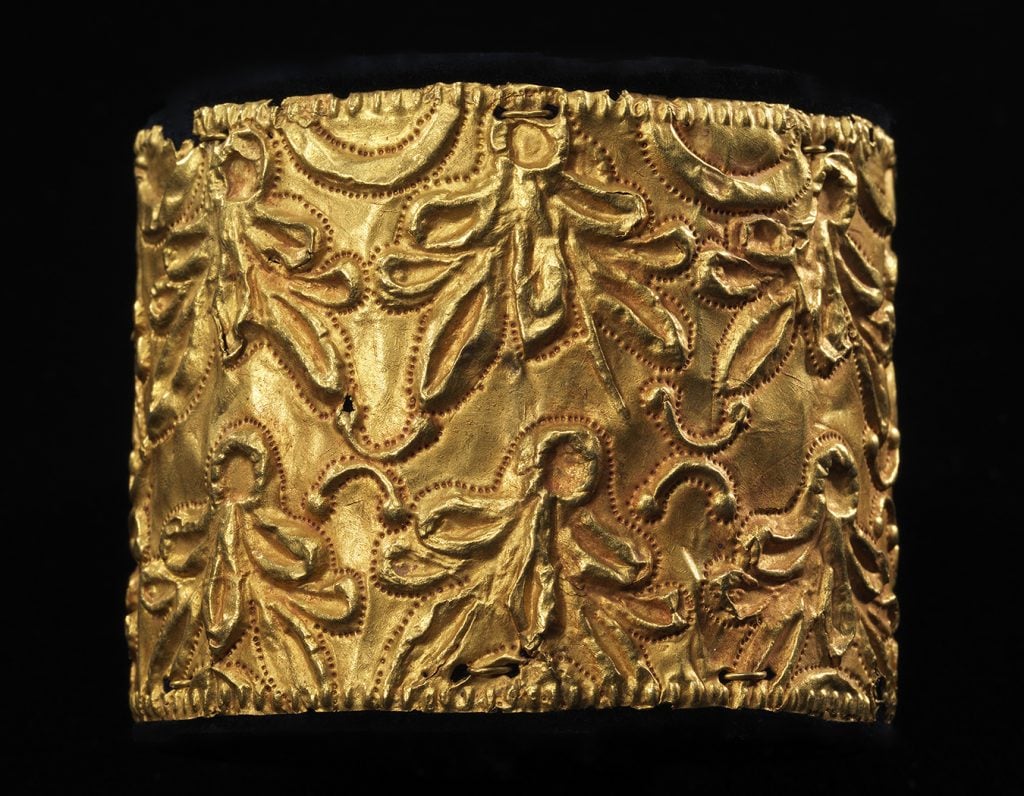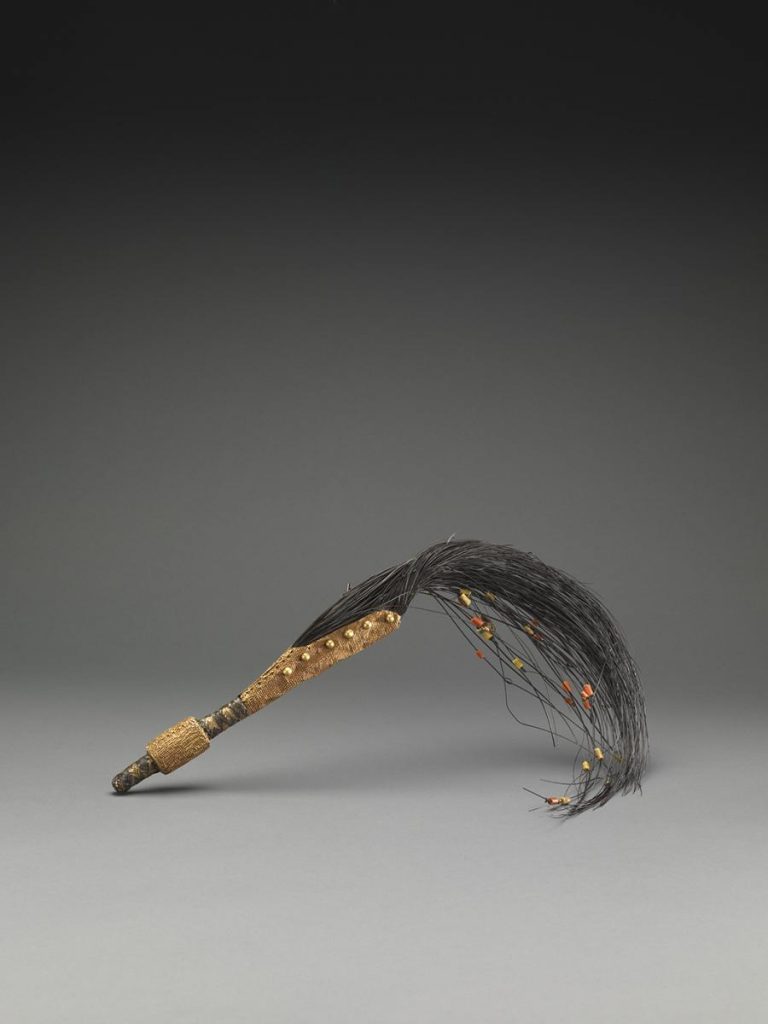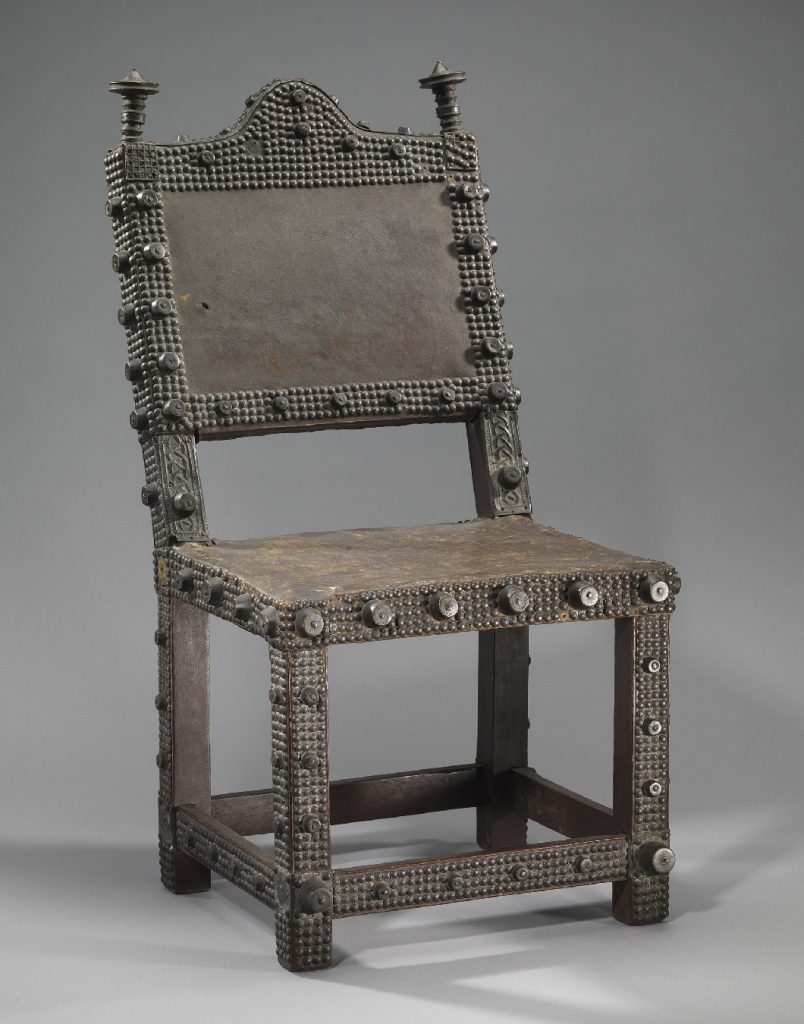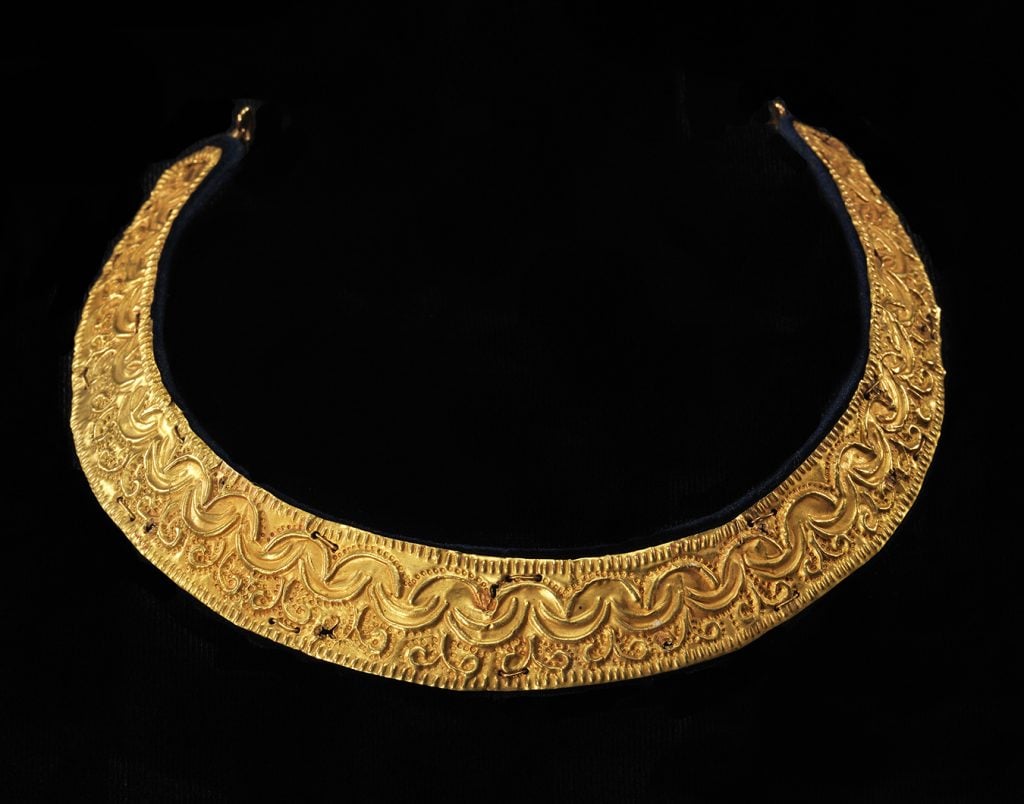Museums & Institutions
The Fowler Museum in L.A. Repatriates Seven Asante Treasures to Ghana
The move follows the museum's detailed research into the objects' provenance.

The move follows the museum's detailed research into the objects' provenance.

Adam Schrader

The Fowler Museum at the University of California, Los Angeles, has repatriated seven royal artifacts to Ghana. The move was initiated by the museum to mark 150 years after four of the items were looted by the British.
The objects were stolen after British forces led by Garnet Joseph Wolseley raided Kumasi, the royal city of the Asante people in Ghana, in 1874 during the Third Anglo-Asante War. In total, five wars were fought between the Asante and the British, before the latter occupied the region in 1900. Asante achieved self-rule in 1935 and entered into a political union with the areas around it to form the country of Ghana in 1957.
The items were handed over on February 8 to Otumfuo Osei Tutu II, the current Asantehene, or leader of the Asante people. They include a royal stool ornament that was in the personal collection of Asantehene Kofi Karikari, the ruler at the time Kumasi was sacked. British forces required Karikari to pay 50,000 ounces of gold under the Treaty of Fomena. It was then sold by luxury jeweler Garrard & Co, entering the marketplace.

A sika mena, or elephant tail whisk (before 1874). Photo courtesy of Fowler Museum at UCLA/Gift of the Wellcome Trust.
Another object, an elephant tail whisk called a sika mena, was also in Asantehene Karikari’s collection and records suggest it was looted from the palace by Captain J.E. Audley Harvey on February 5, 1874, the day the plundering began. Other items returned include jewelry and a royal ornamental chair.
“At the Fowler Museum, we think of ourselves as temporary custodians of the objects in our collection,” senior curator Erica Jones said in a statement. “In the case of pieces that were violently or coercively taken from their original owners or communities, it is our ethical responsibility to do what we can to return those objects.”

An Asipim, or ornamental chair (before 1874). Photo courtesy of Fowler Museum at UCLA/Gift of the Wellcome Trust.
The repatriation, provided without conditions, follows moves by the British Museum and the Victoria & Albert Museum in London to loan the stolen gold and silver treasure in their collections back to the Asante kingdom in a six-year deal.
The decision was reached after the Fowler Museum received a grant from the Mellon Foundation in 2019, which allowed it to conduct research into the provenance of items in its collection. The museum had no data linking the objects to the Third Anglo-Asante War until then. The museum decided to promptly return the items upon completion of its research.

A royal necklace or stool ornament (before 1874). Photo courtesy of Fowler Museum at UCLA/Gift of the Wellcome Trust.
Silvia Forni, the director of the Fowler, told The Art Newspaper that the returns were made because the museum believes that even though it has the legal title to such objects, it is not their proper owner. “They are objects that we have in custody, not just for UCLA and the public, but also we have a responsibility, which is an ethical responsibility to the community of origin,” Forni said.
The museum also revealed that, before the items were returned, it made 3D scans of the objects with the permission of the Asante royal palace. The Fowler plans to commission Ghanian artists to make replicas based on those scans.